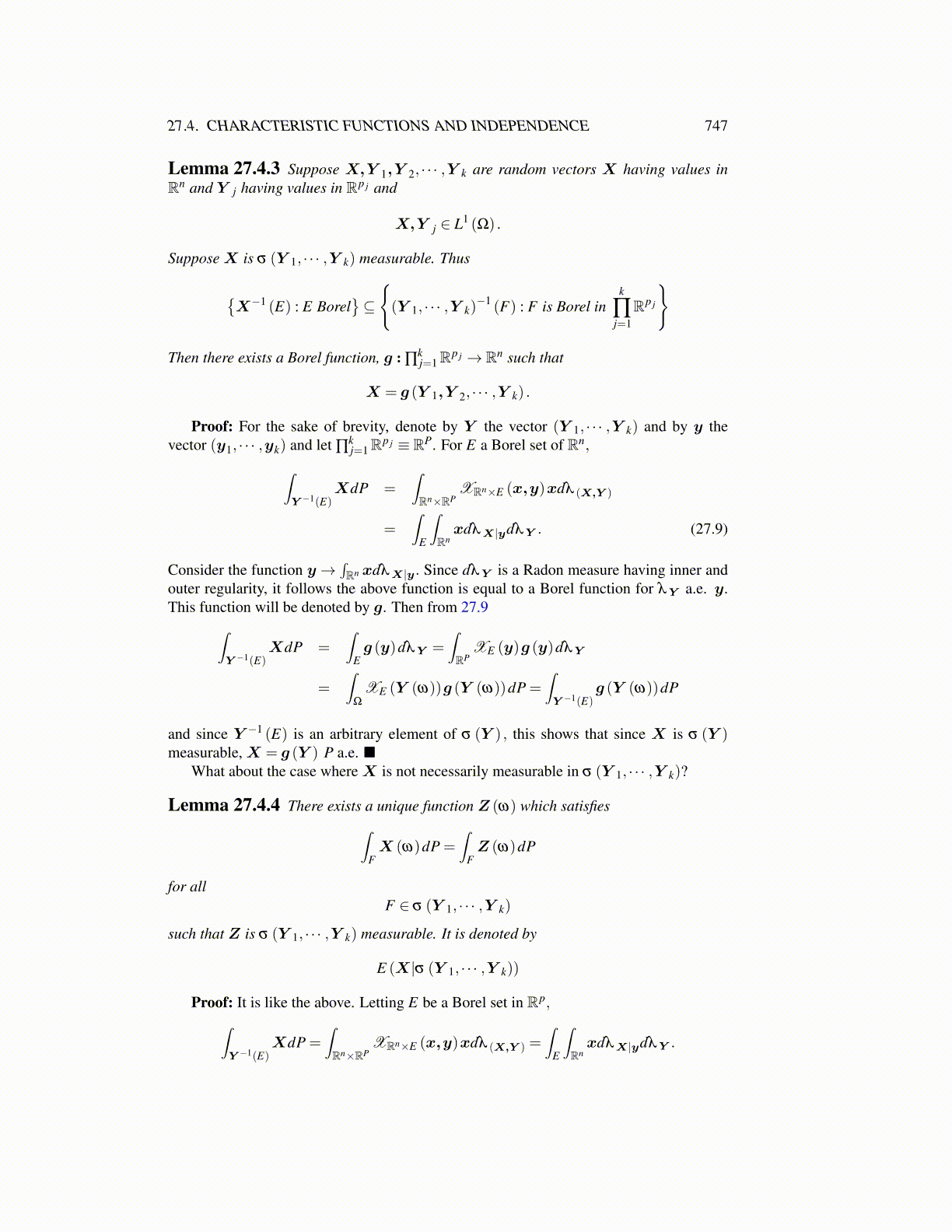
27.4. CHARACTERISTIC FUNCTIONS AND INDEPENDENCE 747
Lemma 27.4.3 Suppose X,Y 1,Y 2, · · · ,Y k are random vectors X having values inRn and Y j having values in Rp j and
X,Y j ∈ L1 (Ω) .
SupposeX is σ (Y 1, · · · ,Y k) measurable. Thus
{X−1 (E) : E Borel
}⊆
{(Y 1, · · · ,Y k)
−1 (F) : F is Borel ink
∏j=1Rp j
}
Then there exists a Borel function, g : ∏kj=1Rp j → Rn such that
X = g (Y 1,Y 2, · · · ,Y k) .
Proof: For the sake of brevity, denote by Y the vector (Y 1, · · · ,Y k) and by y thevector (y1, · · · ,yk) and let ∏
kj=1Rp j ≡ RP. For E a Borel set of Rn,∫
Y −1(E)XdP =
∫Rn×RP
XRn×E (x,y)xdλ (X,Y )
=∫
E
∫RnxdλX|ydλY . (27.9)
Consider the function y→∫Rn xdλX|y. Since dλY is a Radon measure having inner and
outer regularity, it follows the above function is equal to a Borel function for λY a.e. y.This function will be denoted by g. Then from 27.9∫
Y −1(E)XdP =
∫Eg (y)dλY =
∫RP
XE (y)g (y)dλY
=∫
Ω
XE (Y (ω))g (Y (ω))dP =∫Y −1(E)
g (Y (ω))dP
and since Y −1 (E) is an arbitrary element of σ (Y ) , this shows that since X is σ (Y )measurable,X = g (Y ) P a.e. ■
What about the case whereX is not necessarily measurable in σ (Y 1, · · · ,Y k)?
Lemma 27.4.4 There exists a unique function Z (ω) which satisfies∫FX (ω)dP =
∫FZ (ω)dP
for allF ∈ σ (Y 1, · · · ,Y k)
such that Z is σ (Y 1, · · · ,Y k) measurable. It is denoted by
E (X|σ (Y 1, · · · ,Y k))
Proof: It is like the above. Letting E be a Borel set in Rp,∫Y −1(E)
XdP =∫Rn×RP
XRn×E (x,y)xdλ (X,Y ) =∫
E
∫RnxdλX|ydλY .